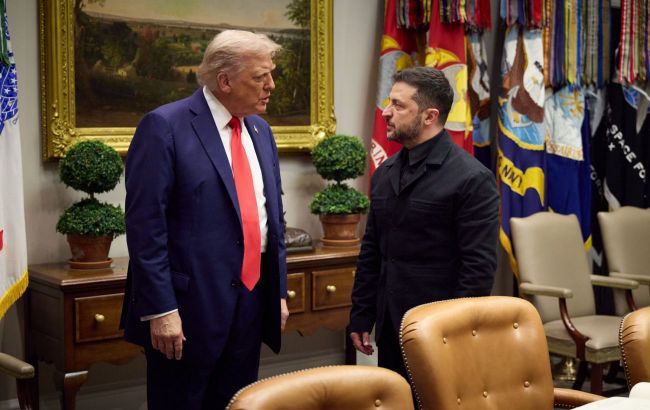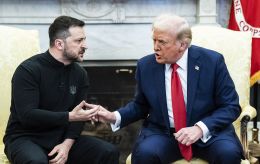US shares data on weak spots in Russia's energy sites with Ukraine – FT
 Photo: US President Donald Trump and Ukrainian President Volodymyr Zelenskyy (president.gov.ua)
Photo: US President Donald Trump and Ukrainian President Volodymyr Zelenskyy (president.gov.ua)
For several months, the US has been helping Ukraine carry out strikes on Russian energy facilities. This is a coordinated attempt to weaken the economy of Russian prsident Vladimir Putin and force him to the negotiating table, reports the Financial Times.
According to the sources, the information provided by US intelligence to Kyiv has enabled strikes on important Russian energy facilities. In particular, oil refineries located far behind the front line.
“The previously unreported support has intensified since midsummer and has been crucial in helping Ukraine carry out attacks that Joe Biden’s White House discouraged. Kyiv’s strikes have driven up energy prices in Russia and prompted Moscow to cut diesel exports and import fuel,” the FT writes.
The exchange of intelligence is the latest evidence that US President Donald Trump has stepped up his support for Ukraine as his frustration with Russia has grown.
Trump's change of attitude probably came after his phone call with Ukrainian President Volodymyr Zelenskyy in July. According to the FT, the US president asked if Ukraine could strike Moscow if Washington provided it with long-range weapons.
Trump reportedly supported a strategy to “make them (the Russians - ed.) feel the pain” and force the Kremlin to negotiate, according to two people who were informed about the conversation. The White House later said that Trump was “merely asking a question, not encouraging further killing.”
How US intelligence helps
The sources say that US intelligence is helping Kyiv plan routes, altitude, timing, and mission decisions. This allows Ukrainian long-range drones flying one way to avoid Russian air defenses.
Three people familiar with the operation said Washington was closely involved in all stages of planning. An American official said Ukraine chose the targets for the long-range strikes, and Washington provided intelligence on the vulnerabilities of those targets.
However, other individuals involved in the operation and briefed on it said the US also identified priority targets for the Ukrainians. One of them described Kyiv's drones as Washington's “instrument” to undermine the Russian economy and push Putin to make a deal.
Trump openly expressed his disappointment with Putin after a meeting in Alaska, where the Russian leader was given the red carpet treatment, but the summit failed to produce any tangible results. According to sources, this was one of the factors that prompted him to change his position in favor of more decisive strikes.
However, the US did not acknowledge its direct involvement in Ukraine's strikes on Russian energy facilities.
Shortly after the July conversation, four individuals familiar with the Ukrainian deep strike drone operation said that US intelligence information with a new level of specificity began to arrive in Kyiv. This information allowed Kyiv to better map Russian air defenses and plan strike routes.
"The tempo of Ukraine’s strikes on Russian oil and gas facilities and pipelines that underpin Moscow’s war effort escalated dramatically in August and September. The damage forced Moscow to curtail diesel exports and increased its reliance on imported fuel," the FT writes.
Zelenskyy spoke with Trump
On Saturday, October 11, Zelenskyy and Trump had a phone call. After the talk, the head of state reported that the parties discussed Russia's strikes on Ukraine's energy sector and the possibility of strengthening the air defense system.
Later, Axios reported that during the call, the leaders discussed the possibility of transferring Tomahawk long-range missiles to Ukraine.

